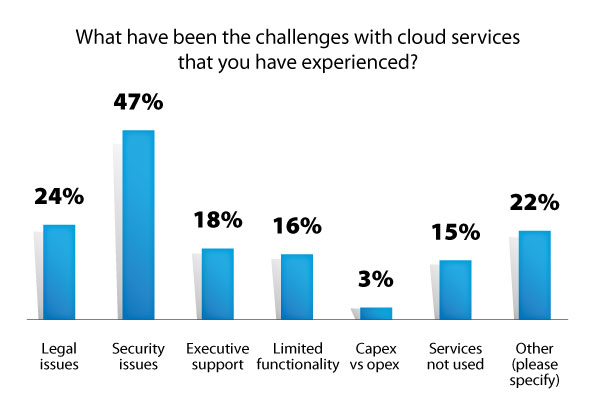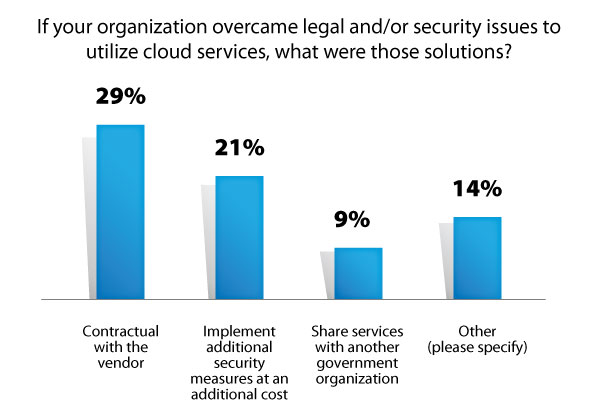Survey: Cloud computing trends
What is in this article?
Opportunities and obstacles
The survey responses point out that moving to the cloud is difficult because it requires change, and staff may be resistant. Other concerns include decision makers who do not want to “lose control of services,” security issues, and respondents’ analysis that did not prove the move to be cost-effective. However, those who are using cloud services said that the move proved to be cost effective. The lowest ranking concern was the inability to find a service that matches the needs of the organization.
The challenge of selling the idea internally is also an obstacle, as pointed out in the responses to, “What are the reasons for not providing services via the cloud today?” “Security” ranked at the top of the list followed by “no executive support, the organization would not accept cloud services, and there is a general lack of knowledge surrounding cloud services.” Communicating the benefits, options and general knowledge of cloud services may help in the general acceptance and migration of services to the cloud.

Legal issues also were cited as a major obstacle to cloud adoption. Making sure that the data is secure and remains in the United States, insuring that the cloud service provider is Criminal Justice Information System (CJIS) certified, or protecting the organization from data loss because of uncontrollable circumstances are some of the many legal issues that governments cited.

There are so many options and concerns about cloud services that may be confusing, but given the right service with a cost effective and efficient process, cloud services may be the answer for many, if not all, governments. At the very least, managers should find out what others are doing, consider research and alternatives, compare solutions, and share conclusions with others considering a similar move.
Jeff Konishi is director of IT for Englewood, Colo.
















